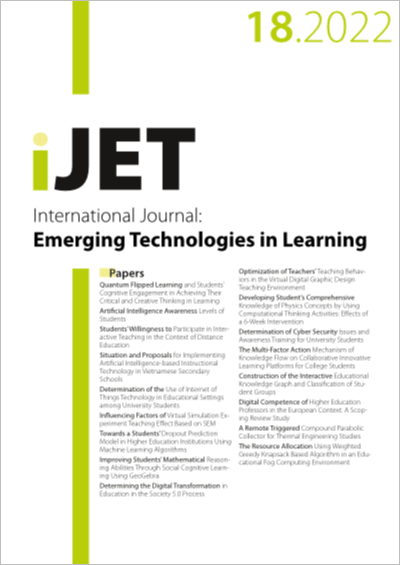Students’ Willingness to Participate in Interactive Teaching in the Context of Distance Education
DOI:
https://doi.org/10.3991/ijet.v17i18.34179Keywords:
distance education, interactive teaching, willingness, hidden Markov model, predictionAbstract
Figuring out students’ willingness to participate in interactive teaching activities is conductive to promoting the application of distance education, thereby assisting teachers to better formulate and implement their teaching plans of distance education. In common practical research on teacher-student and student-student interactions in the context of distance education, the interactive behavior data are mostly collected at certain fixed time points, and the influence of the information technology of distance education platforms on students’ motivation and willingness to participate in interactive teaching activities has been ignored. To make up for these shortcomings, this paper aims to analyze students’ willingness to participate in interactive teaching in the context of distance education. At first, this paper built a hidden Markov model to describe the changes from the current state to the future state of students’ willingness to participate in interactive teaching. Then, based on the data of teacher-student and student-student dialogues, this paper built a prediction model to identify students’ willingness to participate in interactive teaching. At last, the effectiveness of the constructed models was verified by experimental results.
Downloads
Published
How to Cite
Issue
Section
License
Copyright (c) 2022 Nan Zhang (Submitter); Meiji Pan

This work is licensed under a Creative Commons Attribution 4.0 International License.


